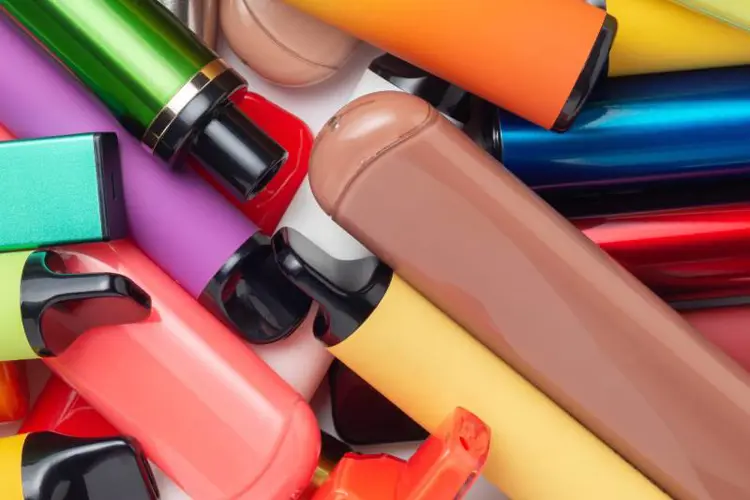With the FDA’s blessing, manufacturer 22nd Century Group this week launched consumer sales of its very low nicotine cigarettes (VLN cigarettes, or VLNCs) in the Chicago area. The deadly, combustible cigarettes have received marketing authorization from the FDA under both PMTA and MRTP pathways.
The company’s VLN King and VLN Menthol King cigarettes will be sold exclusively at 150 Circle K stores in and around Chicago during a marketing trial lasting three to six months, according to a 22nd Century press release. Following the trial, 22nd Century and Circle K intend to expand sales to more than 7,000 stores nationwide. (22nd Century is using "VLN" as a brand, but the term was first used generically for all cigarettes with very low nicotine.)
22nd Century's PMTA (Premarket Tobacco Application) authorization allows the company to market two VLN cigarettes in the United States. The MRTP (Modified Risk Tobacco Product) designation, which FDA granted last December, gives 22nd Century the legal ability to make certain claims when comparing their VLNCs to standard cigarettes.
Specifically, the FDA is allowing 22nd Century to claim that the VLN King and VLN Menthol King cigarettes contain “95% less nicotine,” “greatly reduces your nicotine consumption,” and “helps reduce your nicotine consumption.” The FDA MRTP authorization mandates that, when using any of the reduced-exposure claims, 22nd Century must also include the phrase “Helps you smoke less.”
It's really hard to overstate how backwards the FDA's approach to tobacco harm reduction is, but authorizing a new combustible cigarette (with menthol!) while banning/not authorizing nearly all zero-combustion vapes is really something.https://t.co/yQTVKATLho
— Jacob Grier (@jacobgrier) April 14, 2022
The theory behind VLNCs is that, without nicotine, smokers will tire quickly of the cigarettes and either quit smoking altogether or switch to a low-risk source of nicotine. But VLN cigarettes themselves are not any less deadly than any other cigarette, and if someone continues to smoke them, they will cause just as much cancer, heart disease and lung damage as Marlboros or Newports.
Before 22nd Century, the tobacco products that received MRTP authorization—several styles of Swedish Match General snus, and Philip Morris International’s IQOS heated tobacco product—have been non-combustible products that actually reduce harm for the user.
Unlike those products, VLN cigarettes produce smoke, and smoke is what makes cigarettes dangerous. In fact, the only way that 22nd Century’s products can help anyone improve their health is if smokers don’t use them. VLN cigarettes turn the concept of tobacco harm reduction (THR) on its head.
By granting 22nd Century’s cigarettes modified risk status for eliminating nicotine—the one substance in cigarettes that doesn’t damage the body—the FDA has done nothing to make smoking safer, but has instead encouraged the widespread belief that nicotine itself is harmful. Most people—including most doctors—mistakenly believe nicotine is responsible for much of the harms caused by smoking.
30% of smokers will believe, incorrectly, that VLN cigarettes are safer than regular cigarettes.@FDATobacco is now using misperceptions, created deliberately over 3 decades of tobacco control messaging, to manipulate behavior.
VLNCs are just as harmful as regular cigarettes.
— Charles A. Gardner, PhD (@ChaunceyGardner) April 15, 2022
VLN cigarettes have been a potential tool in the FDA’s anti-smoking kit since former commissioner Scott Gottlieb announced his “comprehensive plan” to reshape the nicotine product marketplace in 2017. Gottlieb’s plan was set aside soon after, but its components continue to have adherents at the FDA and throughout the federal government.
The tobacco control wet dream of eliminating most of the nicotine from cigarettes dates back at least to 1994. Philip Morris (now called Altria) was worried enough about the idea catching fire that it lobbied Congress to include language in the 2009 Tobacco Control Act that would specifically prevent the new FDA Center for Tobacco Products from eliminating nicotine in cigarettes.
Congress did constrain the CTP from eliminating nicotine, but left open the door for the agency to reduce nicotine so much that it couldn’t sustain addiction. Thus, the FDA can authorize very low nicotine cigarettes—but not zero-nicotine cigarettes.
The FDA is currently studying the possibility of mandating very low nicotine levels in all cigarettes, an idea supported by recently appointed FDA Commissioner Robert Califf. Such a plan would face immense obstacles: legal action by tobacco companies, a massive black market in cigarettes, and a lack of high-quality, FDA-authorized low-risk products for smokers who want to continue using nicotine.
While the FDA has seen fit to allow cigarettes to be sold for harm reduction, the agency has all but destroyed the legal market for products that actually do reduce harm: e-cigarettes. The agency has denied PMTAs for more than 99 percent of available vaping products, and seen fit to allow sales of only a few unpopular and ineffective devices.
The Freemax REXA PRO and REXA SMART are highly advanced pod vapes, offering seemingly endless features, beautiful touchscreens, and new DUOMAX pods.
The OXVA XLIM Pro 2 DNA is powered by a custom-made Evolv DNA chipset, offering a Replay function and dry hit protection. Read our review to find out more.
The SKE Bar is a 2 mL replaceable pod vape with a 500 mAh battery, a 1.2-ohm mesh coil, and 35 flavors to choose from in 2% nicotine.
Because of declining cigarette sales, state governments in the U.S. and countries around the world are looking to vapor products as a new source of tax revenue.
The legal age to buy e-cigarettes and other vaping products varies around the world. The United States recently changed the legal minimum sales age to 21.
A list of vaping product flavor bans and online sales bans in the United States, and sales and possession bans in other countries.



















